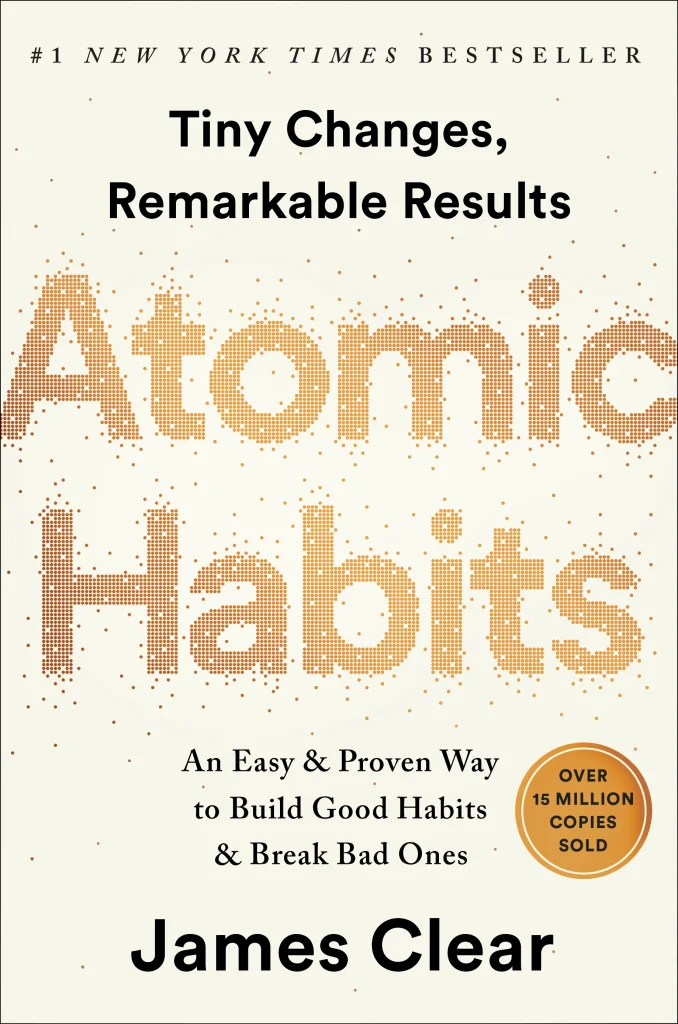“Atomic Habits: An Easy & Proven Way to Build Good Habits & Break Bad Ones” by James Clear is a self-help book that focuses on how small, incremental changes can lead to significant improvements over time. The author presents a practical framework for understanding how habits work and how to effectively build and maintain positive habits while breaking negative ones.
Key Concepts:
1. The Power of Tiny Changes: Clear argues that tiny habits (atomic habits) might seem insignificant on a daily basis but, over time, they accumulate to produce remarkable results. Small improvements, when done consistently, compound to create substantial progress.
2. The Habit Loop:
- Cue: A trigger that initiates the habit. It’s the signal that tells your brain to start the habit loop. Without a cue, there is no habit. Cues can come from various sources in your environment, and they tend to fall into five main categories: Time (waking up may trigger the habit of making coffee), Location (kitchen may cue snacking), Emotional State (stress may trigger eating), Other People (friends may trigger drinking alcohol), Preceding Event (finishing work may cue you to take a walk).
- Craving: The desire or motivation behind the habit.
- Response: The actual behavior or habit.
- Reward: The satisfaction or benefit you get from completing the habit.
3. The Four Laws of Behavior Change:
- Make it obvious (Cue): Design your environment in a way that makes your cues for good habits visible.
- Make it attractive (Craving): Associate positive emotions with your habits so that you are drawn to them.
- Make it easy (Response): Reduce friction and make your habits simple to perform.
- Make it satisfying (Reward): Provide an immediate reward to reinforce the habit.
4. The Role of Identity: Clear emphasizes that lasting habit change is tied to your identity. When you see yourself as someone who embodies a particular habit (e.g., “I am a runner”), the actions that align with that identity become more natural. Shifting your identity can make habit changes stick.
5. The Importance of Systems Over Goals: Rather than focusing solely on goals, Clear advocates for creating systems or processes that will lead to those goals. Habits are a part of the system, and consistently following the system is what leads to success, not the mere act of setting a goal.
6. The Compound Effect: Small, consistent efforts create a compounding effect over time. Just as saving money or investing grows exponentially, the same principle applies to habits. Positive habits compound in the form of personal growth, while negative habits compound as destructive behaviors.
Practical Strategies:
- Habit Stacking: Link a new habit to an existing one (e.g., “After I make my morning coffee, I will meditate for 1 minute”).
- Environment Design: Modify your environment to make good habits easier and bad habits harder.
- Tracking Habits: Clear suggests keeping track of habits to maintain accountability and motivation.
- Breaking Bad Habits: Reverse the Four Laws of Behavior Change (e.g., make the cue invisible, the craving unattractive, the response difficult, and the reward unsatisfying).
Key Takeaway:
“Atomic Habits” shows that small, incremental changes done consistently can lead to massive results over time. By focusing on systems, identity, and making habits easy, obvious, attractive, and satisfying, you can build good habits and break bad ones with long-lasting effects
